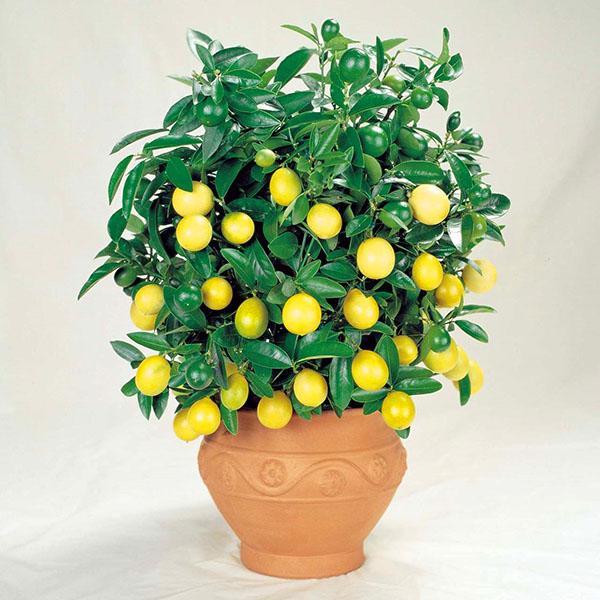Features of indoor lemon care for fragrant fruits
 Indoor lemon will only bear fruit with proper care and provided that a high-quality plant seedling has been chosen.
Indoor lemon will only bear fruit with proper care and provided that a high-quality plant seedling has been chosen.
It is important to choose the correct pot for transplanting the seedling.
Since the lemon grows very slowly, its root system will entwine a large area of the pot for several years. Until a solid earthy ball forms in the pot, the lemon will not bear fruit. Therefore, the plant is transplanted into a cramped pot.
Top dressing
A solution is added to the soil wood ash or liquid biohumus to stimulate sap flow. Such feeding should be done twice a month. In winter, you need to saturate the soil with trace elements. Potassium and magnesium are very important for the flowering of lemon, and phosphorus fertilizers are applied to the soil for better accumulation of nutrients in the leaf plates.
In winter, it is important not to overfeed indoor lemon with phosphates, since due to a lack of sunlight, nitrates and harmful substances can be formed from phosphorus, which accumulate in the ovary during the flowering period.
In the warm season, and especially in summer, lemon needs organic fertilizers. For top dressing in summer, use liquid biohumus, cow humus tincture or herbal infusion. Thanks to such fertilizers, the lemon will grow quickly and bear its first fruits already in the third year after transplanting into a pot.
Formative pruning
To increase the yield, the indoor lemon is formed. Formative pruning can be done as early as eight months of age. If you are forming a lemon bush with a tree, pinch the side shoots of the young plant. They will slow down their growth and allow the central shoot to develop. With this formation, all branches growing inside the crown break off, and the lower ones are cut off to get a bare trunk.
It is very important to leave at least five leaf plates on such a "tree". They accumulate nutrients in themselves, thanks to which the lemon will more easily tolerate pruning.
When a lemon is formed, the top of the central shoot is pinched by a bush, then the lemon begins to grow in breadth. The branches growing inside the bush are removed.
Whichever pruning you use, form only the deciduous crown of the lemon for the first two years. Pick off all stalks. Otherwise, the young plant will spend too much energy on the formation of the first ovary, and in the future the fruits will be small.